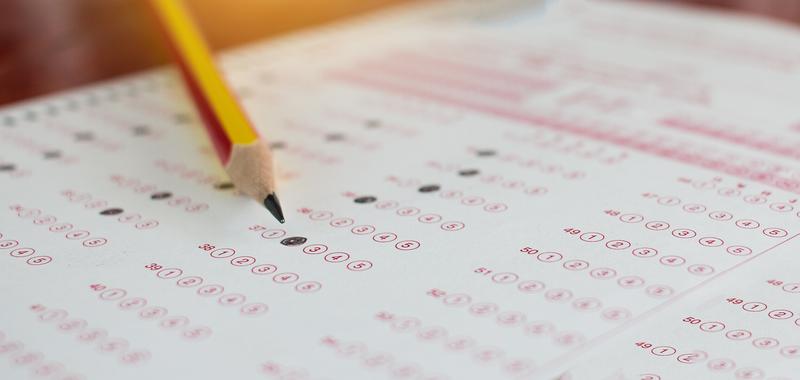The standardized testing landscape has shifted in the past few years, due to a variety of factors. Prior to 2020, a number of elite schools were shifting toward test-optional during the admissions process, but the Coronavirus pandemic required nearly all colleges in the U.S. to shift to test-optional as a result of limited access to testing centers.
Though things have generally returned to normal in the United States, a number of colleges and universities have chosen to remain test-optional, which has resulted in fewer students taking either test. Before students commit to a specific test, they need to determine whether they even need to take it to be considered for admissions at their college choices.
What’s the Difference between the ACT Compared to the SAT?
If taking the SAT or ACT is necessary for you, learn the difference between the two in order to strategize your standardized test-taking plan.
Time Per Test
The SAT takes roughly three hours to complete. The ACT comes in at just under three at two hours and 55 minutes. However, the optional writing portion tacks on an additional 40 minutes.
Math and Science Sections
Both the SAT and ACT feature math sections. The SAT math section is broken up into two components: a calculator section and a non-calculator section. Unlike the SAT, the ACT does have a Science portion.
Optional Essay and Writing Assignment
The ACT has an optional writing component of the test. A few years ago, the SAT also had an optional writing portion; however, it was eliminated, along with the SAT Subject Tests, in an effort to simplify the SAT.
ACT vs. SAT Scoring
Naturally, the SAT and ACT are scored very different. The ACT has a score range between 1 – 36, whereas the SAT is scored from 400 – 1,600. If you’re curious, you can view a
ACT vs. SAT scores conversion chart.
Cost of the Test
Like the sections featured and scoring, the tests differ in terms of cost. What is the same, however, is that students who cannot pay for the ACT or SAT are able to seek
financial assistance.
The ACT Test
The ACT seeks to reveal what students have learned over their high school career. It also indicates the degree of college readiness for each individual student.
Length of Test
The ACT takes approximately two hours and 55 minutes to complete. Below is a breakdown of each section:
• Reading: 35 minutes
• English: 45 minutes
• Science: 35 minutes
• Math: 60 minutes
Number of Questions per Section
In addition to set timing, each section also has a specific number of questions students must answer:
• Reading: 35
• English: 75
• Science: 35
• Math: 60
Cost to Take the ACT
The ACT is $68. However, students that wish to add the writing portion must pay an additional $25. Some colleges require the ACT writing component, so before you register, check schools that you’re interested in for their requirements.
NOTE: There are fees applied for students who register late or wish to change their test date/testing center. If you require more test scores to be sent to different colleges, fees will be applied to your request as well.
The SAT Test
The SAT tests college readiness and gives admissions committees a way to compare college applications between students.
Length of Test
The SAT takes approximately three hours to complete. Subjects are broken down into the following times:
• Reading: 65 minutes
• Writing and Language: 35 minutes
• Math : 80 minutes
Number of Questions per Section
In addition to set timing, each section also has a specific number of questions students must answer:
• Reading: 52
• Writing and Language: 44
• Math: 58
Cost to Take the Test
The SAT is $60. There are additional fees applied for students who register late, wish to change their date or testing location, or want to send scores to more colleges.
NOTE: Beginning in spring 2024, the SAT will only be offered in digital format. In addition to being offered digitally, students will find that the actual test time is shorter and questions will be adaptive.
ACT Scores vs. SAT Scores
Again, scoring between the two tests is very different, but you can compare scores using a conversion chart.
ACT Scoring
ACT scores range from 1 – 36.
• 1 – 19: Below Average, or Poor
• 20 – 25: Average, or Good
• 26 – 29: Above Average, or Competitive
• 30 – 35: Highest, or Best
• 36: Perfect, or Max
The ACT allows for a Superscore to be sent to colleges. An
ACT Superscore is the average of the four best subject scores from each of a student’s attempts.
For instance, if you scored better on the English section the second time you took the test and then performed better on the math portion the third time you took the test, the Superscore test results will send the English score from the second test and the math score from the third test.
SAT Scoring
Unlike the ACT, SAT scores are broken down by section. Your SAT score report will first give your total score, which will range from 400 – 1600.
You will then see your scores by section. Writing and Math scores range from 200 – 800.
In addition to your scores, you can see how you rank with other test-takers by viewing your score in percentiles. You’ll also see whether you performed above, at, or below benchmarks for each subject, which will give you an idea of whether you’re on track for high school graduation.
Which Test is Easier?
If you’re looking to take the easy way out when it comes to standardized testing, you’ll be disappointed. Though these tests are very different from one another, they are the same in terms of ease or difficulty.
Most students will spend years preparing for the exams. Many will complete test prep in the classroom, while others may opt for additional test prep outside of school hours. Either way, expect that test prep will be incorporated into your curriculum somehow.
Should You Take the SAT or ACT?
Students can practice for the SAT by taking the PSAT/NMSQT. This test is administered to juniors – and some sophomores – in October. It tests the same skills as the SAT and can provide students with an idea of how well they would perform on it.
NMSQT stands for National Merit Scholarship Qualifying Test. The
National Merit Scholarship Program utilizes scores from this test to administer scholarships to qualifying students. Over
$300 million in college scholarships are available through this test.
The ACT also has a practice test that students can take during their sophomore year – the PreACT test. Much like the PSAT, the PreACT informs students of how well they might perform on the ACT.
It will also tell students whether they’re on the right track, academically-speaking, to being admitted to college. Students do not have to take either the PSAT or PreACT during their sophomore year or fall semester of their junior year. However, it is recommended that students take the SAT or ACT sometime during their junior year.
Taking the tests during their junior year gives students some breathing room and helps to answer a few questions:
• Did I perform better on one test over the other?
• Should I retake either test in hopes of scoring better?
• Are colleges I’m applying for test-optional?
It has been proven, generally, that students perform better on these tests the more they take them. It’s not unusual for a student to take either the SAT or ACT two to three times before sending test scores to colleges.

